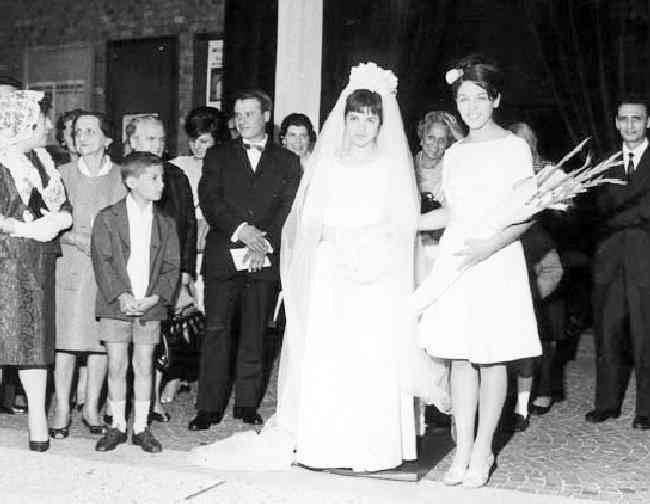
Figure 1.--Nost Italian marriages until after Word War II were Church weddings. After the War civil marriages became more common. The image here shows a civil wedding, probably during the 1950s. |

|
While most Italianns are Catholic most no longer practice their religion. This is reflected in Italian wedddings. Most Italians have Church weddings regardless of the extent of their relgious convictions. This was cerainly the case before the 1947 Constitution, but even continues to be the case today. There was of course a wide range of Church weddings. Some were quite formal affairs with very elaborate formal clothing. Others held by families of modest incomes were much less elaborate affairs with only the bride and groom dressing up. Even modest affairs involved a procession, although this custom ha since World War II gradually gone out of fashion. We do not yet have a great deal of information on Italian weddings, but have begun to collect information. Nost Italian marriages until after Word War II were Church weddings. After the War civil marriages became more common.
Italian weddings can be both loud and luxurious. They are familiar to many becausevtheybnhave been depicted in many movies, most famously 'Gofdather'. There is commonly an emphasis on rhree major elenet: religious ceremony, family, and tradition. Italy is a predominantly Catholic country, most ceremonies take place in a church, accoring tom one source, the bigger and more opulent, the better! While most Italianns are Catholic, at least culturally Catholic. Most Italians no longer practice their religion and secularization is an on going trend. We are not sute justbhow this has been infected in modern Italian wedddings.
Many Italian wedding traditions are differences with American weddings which are primarily based on 19th century British Victorian traditions. Italian-Americans have incorpaorates some of the wider American traditions. Less so in Italy itself where many far older traditiins continue to be populasr. Bridesmaids and best men are part of the British Victorian tradition. In Italy, the couple select witnesses, or testimoni. As is common in other European wedding traditionss, the wedding begins wih the bride’s father escorting her down the aisle, And after the wedding, the guests throw rice onto the couple's heads. his was an ancient ritual to wish fertility, but declining for ecological reasoins. Italians have centuries if not millenia of wedding traditions to draw upon. Many Italian weddings involve some of these traditions. There are variations, some more popular than ithers in various regions. Sometimes the bride will not wear gold because it was thought to bring bad luck. Another traditiion is for the groom to carry a small piece of iron, aharbingr of good lucvk. Sometimes couples walk up to the church altar together. Sometimes the groom provides a bouquet to the bride. Another Italian tradition is to tie a huge ribbon across the chirch entrance. Thuis may be the origins of the phrase 'tying the knot' We see some weddings in which the women wear folk costumes.
Most Italians have Church weddings regardless of the extent of their relgious convictions. Even Communists might have Church weddings. This was cerainly the case before the 1947 Constitution, but even continues to be the case today. While most Italiands are no longer fervent believers, most consider themselves to be culturally Catholic. There was of course a wide range of Church weddings. Some were quite formal affairs with very elaborate formal clothing. Others held by families of modest incomes were much less elaborate affairs with only the bride and groom dressing up. Priests oficiated aided by altar boys.
Even modest affairs often involved a procession, especially in rural villages. This custom has since World War II gradually gone out of fashion. The wedding procession ( corteo nuziale ). In some Italian villages there was the tradition of wedding parade. The bride went to church accompanied from their father. The bridegroom followed accompanied from mother-in law. We note a procession in Caprarica, in southern Italy near Bari, in 1950s or early 1960s. It is a goof example of a wedding procession. It was summertime. At the sides of parade there are village children in their "casual" clothing. Usually they are barefoot; someone just in underwear. Since late 1960s this tradition has disappeared.
We do not yet have a great deal of information on Italian weddings, but have begun to collect information. Nost Italian marriages until after Word War II were Church weddings. After the War civil marriages became more common. The image here shows a civil wedding, probably during the 1950s (figure 1).
Navigate the Boys' Historical Clothing Italian pages:
[Return to the Main Italian religion page]
[Return to the Main Itlalian page]
[Return to the Main religion page]
[Italian school uniforms]
[Italian youth groups]
[Italian choirs]
[Italian movies]
[Italian royalty]
Navigate the Boys' Historical Clothing Web Site:
[Introduction]
[Activities]
[Biographies]
[Chronology]
[Clothing styles]
[Countries]
[Bibliographies]
[Contributions]
[FAQs]
[Glossaries]
[Images]
[Links]
[Registration]
[Tools]
[Boys' Clothing Home]
